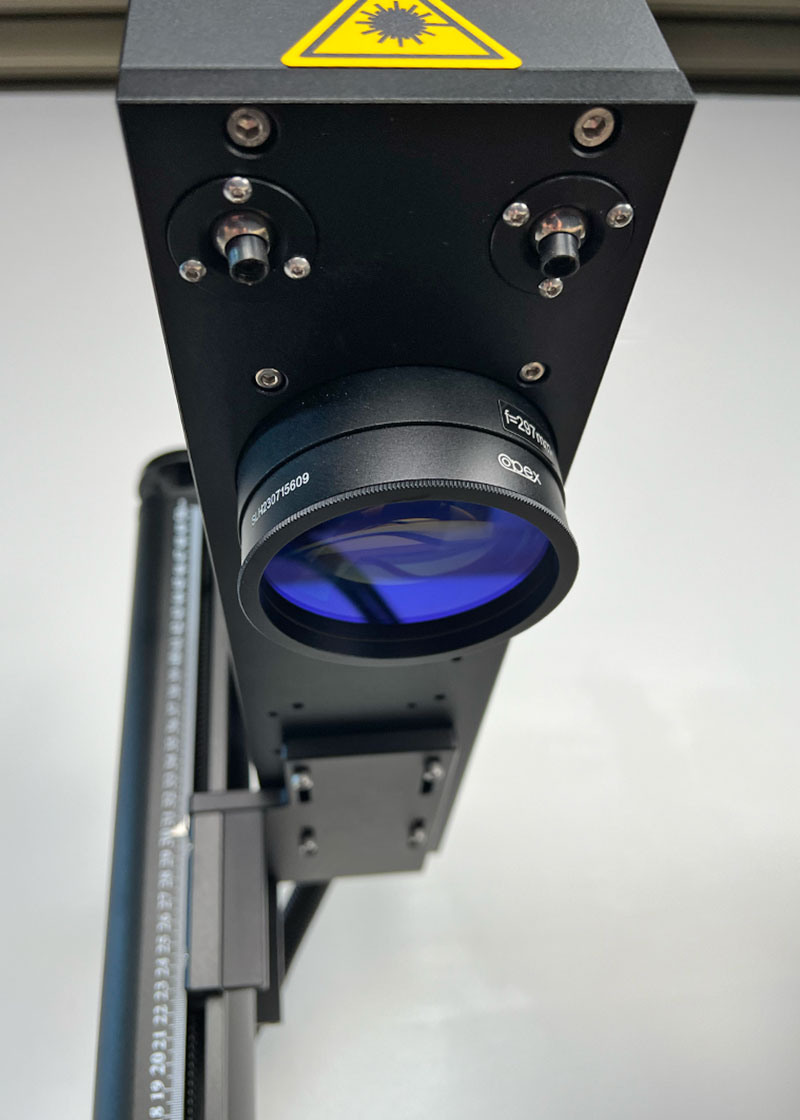Intro to Laser Marking

To better understand the differences between these two types of lasers let’s start with a few definitions:
Laser pulse (or pulse duration) — The length of time a laser emits a pulse of light. This affects the amount of time the laser interacts with the material.
Laser frequency — The number of laser pulses produced in one second, measured in hertz (Hz). This affects the wavelength of the laser and the materials it can interact with.
Duration and frequency have an inverse relationship: as one decreases, the other increases. This relationship can greatly affect how the laser interacts with the base material.
As mentioned previously, there are generally two types of fiber lasers; Q-Switched and MOPA.
Q-switched — Refers to the mechanism, either active or passive, in which laser energy is allowed to accumulate, gaining power, and then it is released in short and intense pulses on a scale of nano or microseconds. This method allows for little to no control of pulse and frequency.
MOPA — MOPA is an abbreviation for Master Oscillator Power Amplifier. In a MOPA laser, an oscillator generates a signal of a precise shape (frequency) and length (pulse). Power is increased by utilizing an amplifier, allowing the original signal to remain. The fact that the pulse and shape of the signal retains its set characteristics allows for them to remain through beam formation and down to the workpiece.
Advantages of MOPA vs. Q-switched for laser marking
Selectable pulse durations not only improve laser marking results on metals and plastics, but also provide more marking capabilities. With the MOPA laser, the pulse durations can be set to predefined values, typically between 4 and 200ns. Because it offers such a wide range of pulse durations, the MOPA is one of the most flexible lasers on the market. It can simulate the properties of conventional fiber laser markers (relatively long pulses) and those of classical solid-state lasers (relatively short pulses).
The ability to use short pulses and lower pulse energy heats the material less, therefore reducing the heat-affected zone. This results in more advantages and possibilities for laser marking metals and plastics:
- Less burning/melting at the edge of a mark
- Less heat development during annealing, resulting in less chance of corrosion
- Black marking on anodized aluminum
- More homogeneous and higher-contrast markings on plastics
With the upside of the control, MOPA lasers retain all of the advantages of conventional fiber lasers:
- Extremely low maintenance
- Long service life
- Air-cooled
- Short ROI
DMS offers only MOPA fiber laser marking machines due to overall benefits and ability to deliver the most flexibility over the widest range of materials, with the capability to produce the highest quality marks. Reach out to our team to discuss your application and the right system for you.
